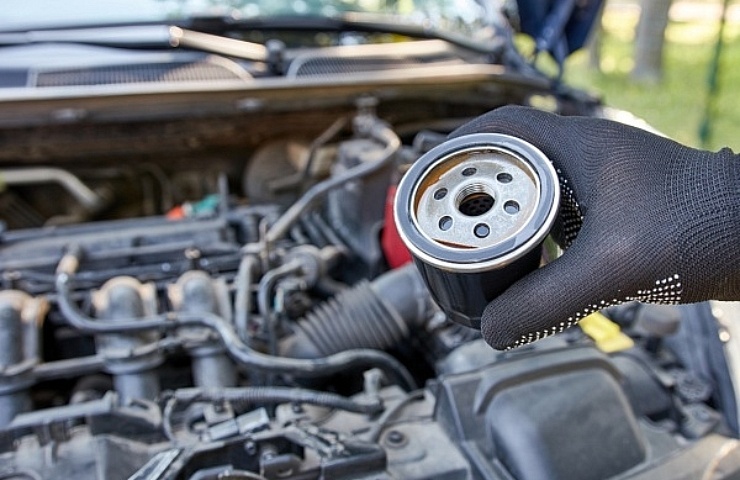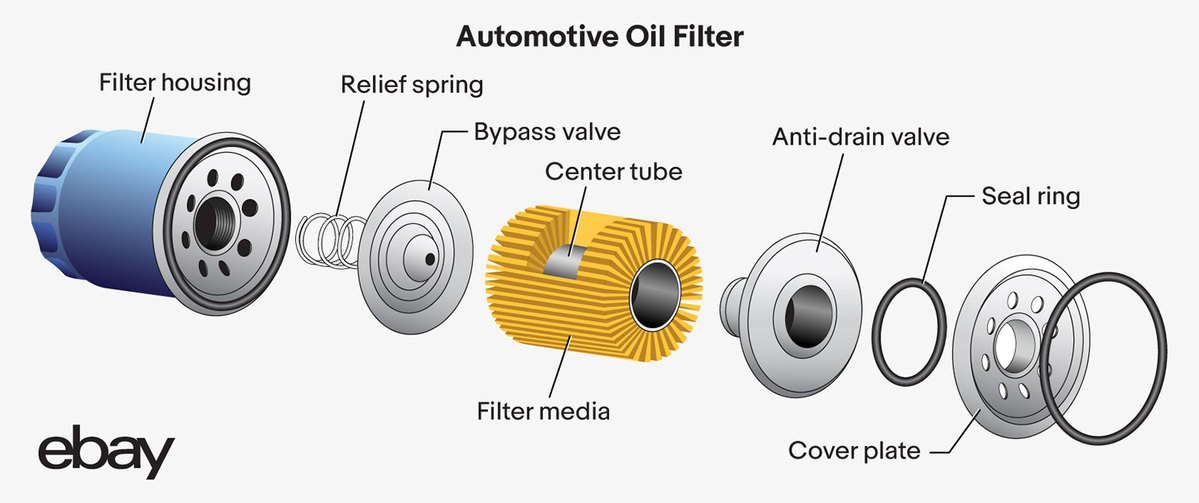Contents
How to Recognize a Quality Oil Filter
Here are the four main factors to look for in a quality filter:
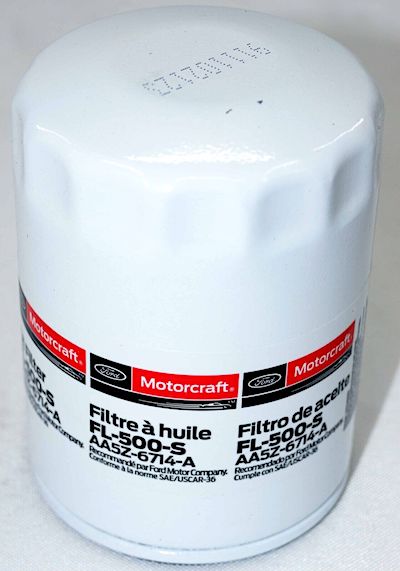
OEM Motorcraft
- Ability to capture particles as small as 25 microns, and smaller is even better. Synthetic media is usually more effective than paper or cellulose.
- A bypass valve
- An anti-drain back valve
- Silicone gaskets and valves
The list of popular respected oil filter brands include: Bosch, Fram, K&N, Purolator, and Wix.
Regardless of which brands you use, you should regularly change out the oil and filter. Maintain a consistent maintenance schedule and use quality filters for all your vehicles.
Shop now for oil filtersOil Filter Parts
An oil filter consists of a metal cylinder case containing a filter media to capture and contain contaminants. High-quality filtering materials captures small objects—often smaller than 20 microns. For comparison, a human hair is about 75 microns in diameter.
Filter Media
Most quality media is made from a woven synthetic material. It’s pleated to allow for more contact with the oil as it passes through the filter and is often reinforced with wire for rigidity.
The filtering effectiveness and capacity of most filters is indicated on the box or the brand’s website. Capacity refers to how much contamination a filter can hold and still be effective. Effectiveness refers to what percentage of a specific contaminant size (in microns) the filter captures. Quality filters should be at least 95 percent effective.
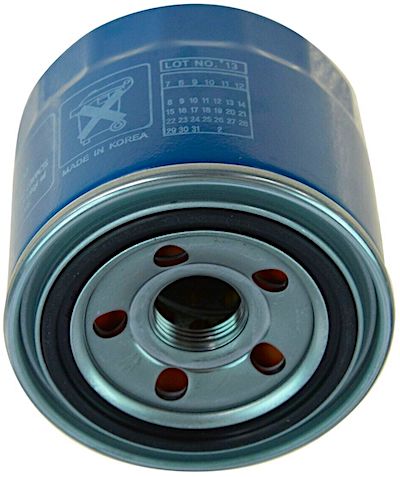
Bypass Valve
Since it’s better to have dirty oil lubricating the critical engine parts than no oil, a quality unit will have a bypass valve. If it gets clogged and limits the oil volume passing through the filter, the bypass valve engages to allow unfiltered lubricant to flow back to the engine. Usually, a spring bypass valve is a better quality unit than a valve made from stamped metal.
Anti-Drain Back Valve
Many oil filters also have an anti-drain back valve. This is especially critical for oil filters mounted on the top of the engine or sideways. Without this anti-drain back valve, the oil would quickly drain out of the filter when an engine shuts off. If that were the case, the next time the car started, there would be a few moments with limited oil flow while the filter filled back up with oil.
Starting an engine without oil circulating through the critical parts increases wear and tear on the moving metal parts of the engine. The anti-drain back valve keeps the oil filter filled with oil to eliminate this issue. Most quality valves are silicone, while others use nitrile or rubber. Silicone lasts longer and can function better in both cold and hot temperatures.
Spin-On or Cartridge?
For years, oil filters have been spin-on style. The center of the base plate has a threaded hole matching a small nipple on the engine block. You align the filter against that threaded nipple, spin it on, and then torque it to the manufacturer’s specifications. Usually, a quarter turn after snug is sufficient. Don’t over-tighten this filter.
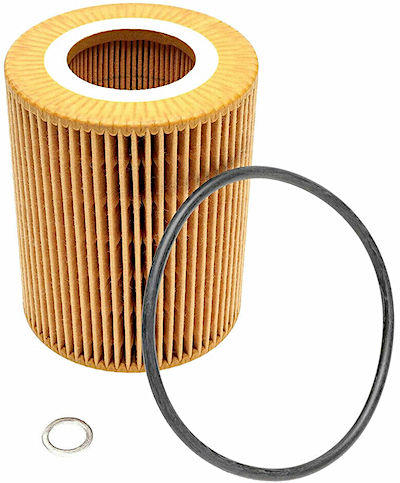
Cartridge-style oil filter
Many car manufacturers are now using cartridge-style filters. After draining the oil from the filter case, you use a special fluted cap to unscrew the canister, pull out the old filter, clean the interior, install a new filter, and reinstall the case. This eliminates the waste of the discarded metal canisters, and the oil in the filter can be recycled more easily.
With either style, the basic function of the oil filter remains the same. The difference is whether you change only the filter media or the entire oil filter.
Shop now for oil filtersChanging an oil filter can be messy, but it can easily be done in under an hour. Check our step-by-step guide to make it painless and carefree.
Oil Filter Choices
There are many oil filter brands, including Bosch, Fram, K&N, Purolator, and Wix. The reality is that most oil filters are made by only a few manufacturers worldwide, often with little variation from brand to brand besides color.
- If you’re conscientious and change your oil based on the manufacturer’s schedule, nearly any oil filter will work for your grocery-getter.
- A quality high-performance oil filter will be a worthwhile investment if you drive high-performance cars or push your vehicle to the limits.
- Expect to pay under $10 for a basic oil filter; premium oil filters should cost less than $25.
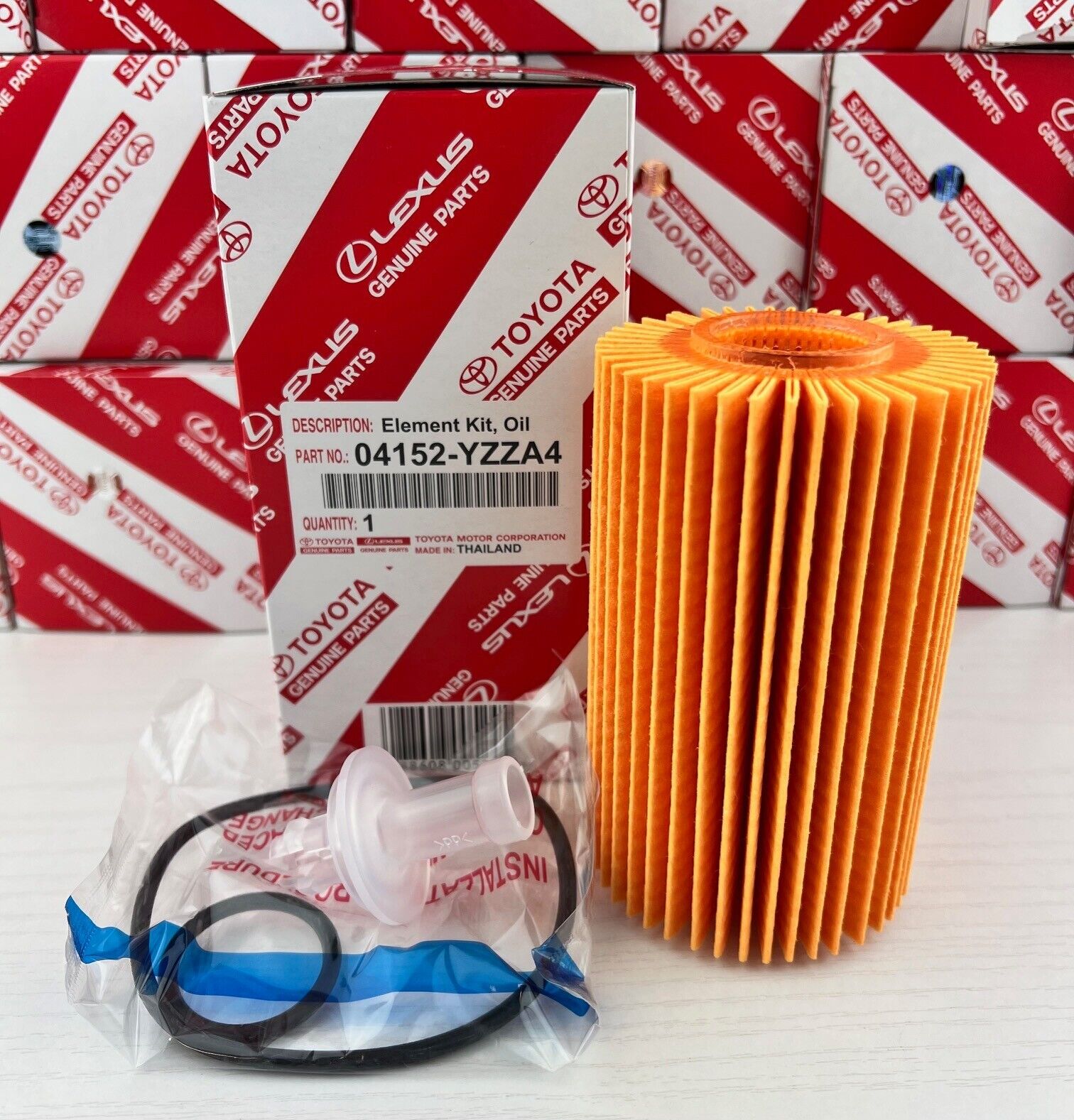
Toyota/Lexus OEM cartridge
Most car makers sell their own branded oil filters. Since it matches what came from the factory, you know it meets the engine maker’s specifications.
The eBay Motors My Garage fitment guide ensures that you locate an oil filter fits your car. Most manufacturers have comparable websites where you can verify the model of oil filter. Some brands do not offer filters for all engines, so check before you buy.
Read: Car Parts Bought on eBay Are Guaranteed to Fit
In any case, follow your owner’s manual specifications for how often to change your oil and filter. Change the filter with every oil change. You should avoid adding new oil and then running it through an old, dirty filter, especially when the oil probably costs more than the filter.

